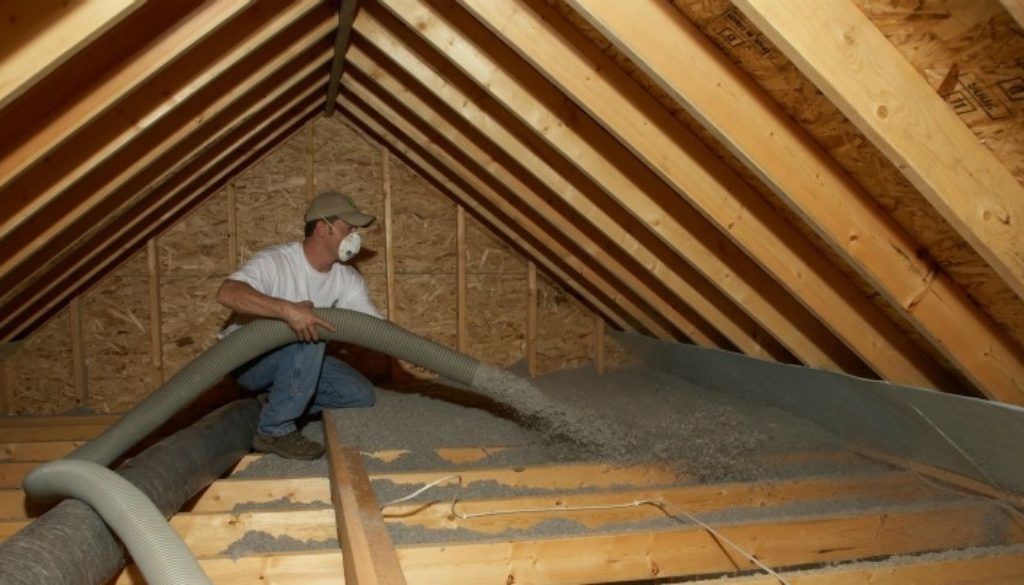Low Income Energy Efficiency Programs Reduce Energy Use and So Much More
By Deron Lovaas, Natural Resources Defense Council
Making homes more energy efficient brings outsized benefits for those living on moderate-and-low incomes, lowering their energy bills, maintaining the affordability of their homes, reducing pollution, and creating healthier and more comfortable living environments for families. Unfortunately, a new working paper by The E2e Project appears to have missed this point, while unfairly overgeneralizing the U.S. Department of Energy’s Weatherization Assistance Program (WAP) and energy efficiency programs in general.
The paper analyzed a single program to improve energy savings in Michigan for low income residents. The Michigan program in question, part of WAP, installed new furnaces, insulation and weatherstripping in single-family housing. It also included basic non-energy improvements such as removing asbestos or upgrading wiring that would not produce energy savings, per se. My colleagues tackle the many problems with extrapolating these results to the entirety of residential efficiency here and here. But efficiency programs focusing on low income residents, like WAP, are also poorly served by this type of analysis.
The WAP has a long history of success
Exclusively targeted to low-income households since its inception in 1976, WAP has been responsible for improving 7 million single-family homes to date. The program’s core mission focuses on benefits well beyond utility bill- and energy savings – better health and safety by reducing heat-related illness and death, the risk of home fires due to utility disconnections, and higher incidences of asthma and other respiratory diseases due to mold and poor ventilation. In fact WAP rules allow a certain percentage of program funds to be spent specifically on measures that improve the health and safety of the resident, but may not result directly in energy savings. When analyzing WAP, it’s crucial to include these co-benefits (see here and here for recent publications on such co-benefits).
The benefits outweigh the costs
These “non-energy benefits” are real and documented and are what Congress intended in its authorizing legislation: “… and improve their health and safety, especially low-income persons who are particularly vulnerable such as the elderly, the handicapped and children.” [42 U.S. Code 6861(b)]. Acknowledging this, utility regulators in many states apply a different set of cost effectiveness tests to low-income energy efficiency programs.
More than saving energy
WAP and other low-income weatherization programs, unlike conventional energy efficiency programs, pay for the entire cost of the upgrade. For example, the program will pay $2,500 to replace an old furnace, while the traditional energy efficiency program will rebate the homeowner $200 for the same purchase to cover the incremental cost of the energy efficient model. WAP is tailored to help these vulnerable residents, who typically possess no discretionary income to devote to energy improvements, and live in older housing stock that can in very poor conditions. Furthermore, the outreach and administrative costs for WAP-like programs are much higher than those for traditional energy efficiency programs – both to effectively reach low-income households and to meet stringent government monitoring protocols. These design components add to the cost of the program, however the multiple benefits (not just simple energy savings) must be counted in the balance.
The Michigan program cannot be extrapolated to other WAP program designs
In addition to concluding that the energy efficiency measures in the WAP were not cost effective, the E2e paper says the actual energy savings were less than had been predicted. But it fails to take into account that some important energy efficiency measures may have been omitted, including duct sealing and the installation of programmable thermostats, two of the most cost-effective measures for reducing residential heating and cooling bills.
States that include these and other measures have higher savings rates. In Massachusetts, for example, WAP savings of 20 to 25 percent are common – vs. the 10 to 15% reported in the Michigan study. With average heating bills even for small homes running in excess of $1,500 a year for gas-heated homes and $2,250 and more for oil-heated ones, a 20 percent reduction, even at this past winter’s unusually low oil prices, means a savings of at least $300 for gas customers and $550 for oil customers. This means a 15-year payback for a $5,000 weatherization investment. A recent independent study of Ohio’s WAP program documents investments have been producing approximately $2.51 in savings and other benefits for every $1 they cost. And this is the study’s biggest weakness – claiming that assessing one program in one state, and doing so with a bias towards costs vs. benefits, is generalizable to all 49 other states.
We weatherize homes to save energy and to resolve health problems for vulnerable individuals. Increased efficiency can help stabilize housing and neighborhoods. Low- income programs will always serve multiple purposes, saving energy and providing societal benefits, and we would be wise to remember that.

